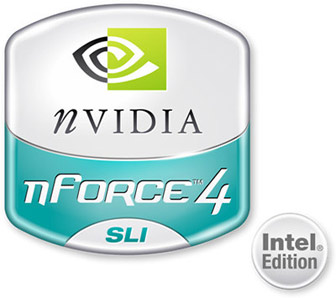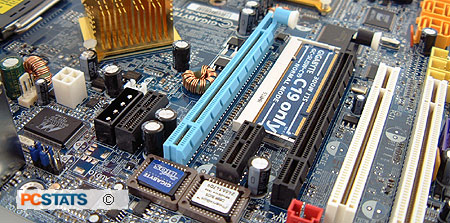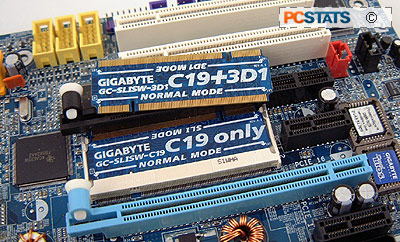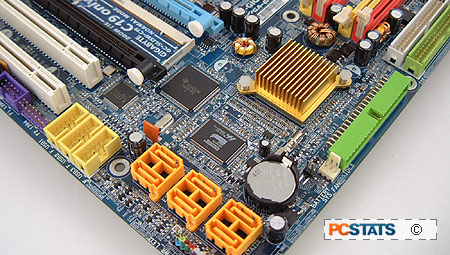 The 'Crush 19' nForce4-SLI Intel Edition chipset differs substantially from the
Nforce 4 chipset for AMD64 in a couple respects. The most obvious
difference is that the nForce 4 SLI Intel Edition is not a single chip solution. Instead of having all
chipset elements integrated into a single IC as the nForce 3 and 4 chipsets for
AMD did, the Intel Edition has a conventional split Northbridge/Southbridge
setup.
The 'Crush 19' nForce4-SLI Intel Edition chipset differs substantially from the
Nforce 4 chipset for AMD64 in a couple respects. The most obvious
difference is that the nForce 4 SLI Intel Edition is not a single chip solution. Instead of having all
chipset elements integrated into a single IC as the nForce 3 and 4 chipsets for
AMD did, the Intel Edition has a conventional split Northbridge/Southbridge
setup.
The lack of an integrated memory controller and Hypertransport links on the
current Intel processors necessitated this change. The 'Crush19' Northbridge
handles the PCI Express bus and memory controller duties, while an nVidia MCP04
Ultra Southbridge chip covers other I/O tasks like the PCI bus, SATA and IDE
drives and USB.
As you might have expected, the 'Crush 19' nForce4-SLI Intel Edition motherboard is Socket 775 only, of
course, and supports Pentium 4 'D' processors as well as Pentium 4 EE (Extreme Edition)
chips. It should also be compatible with Intel's upcoming dual-core processors
on release. Other technologies associated with the these Pentium 4 CPUs
are also supported, including EM64T, the XD bit and EIST (Enhanced Intel Speed Step)
technology.
The nForce4-SLI Intel Edition introduces a first for
Intel-based systems: The use of the Hypertransport bus. While a conventional FSB
structure connects the Pentium 4 processor to the chipset (since Pentium 4 chips
do not natively support Hypertransport like Athlon 64 processors do), an 800MB/s
Hypertransport connection is used to bridge the gap between the Northbridge and
Southbridge. This hybrid structure is one of the things that makes the nForce 4
SLI Intel Edition so interesting.

The most interesting thing
though (for Intel enthusiasts anyhow), is the introduction of nVidia's SLI to
the Intel platform. As far as we know, this functions identically on both Intel
and AMD versions of the system, with a physical switch changing between SLI and
non-SLI mode. 16 lanes of PCI Express are divided in two to service both PCIe x16 graphics
ports for SLI or sent directly to one port for non-SLI. Up to three PCIe
x1 slots are also supported on this particular motherboard. nVidia claims that Intel SLI can
provide a 70% performance advantage over single video card configurations. We'll
see how they actually fare in our benchmarks later in the article.

Becuase of Gigabyte's unique GV-3D1 dual GPU videocard, a separate switch has been included
with the GA 8N-SLI Royal specifically for use with that videocard.
Another addition different from that of the AMD
nForce 4 chipset is that a memory controller had to be added to the nForce 4 SLI
Intel Edition chipset. Intel processors do not (yet) have integrated memory
controllers built into them like their 64-bit AMD competitors do. This, more
than any other factor necessitated the change to a split Northbridge/Southbridge
form factor. The controller nVidia has added supports dual-channel DDR2-400 to
DDR2-667 memory at speeds of 1066MHz and 800MHz.

The MCP04 Southbridge is identical in functionality to
the I/O capabilities of the AMD Nforce 4 chipset. It supports
four serial ATA 300 devices, two ATA/133 channels, 10 USB 2.0 devices, integrated Gigabit
Ethernet, 7.1 channel audio and the PCI bus. Other chipset features
like the ActiveArmour firewall will also remain the same in both versions. Next
up, overclocking on the nForce 4 SLI Intel Edition chipset!
